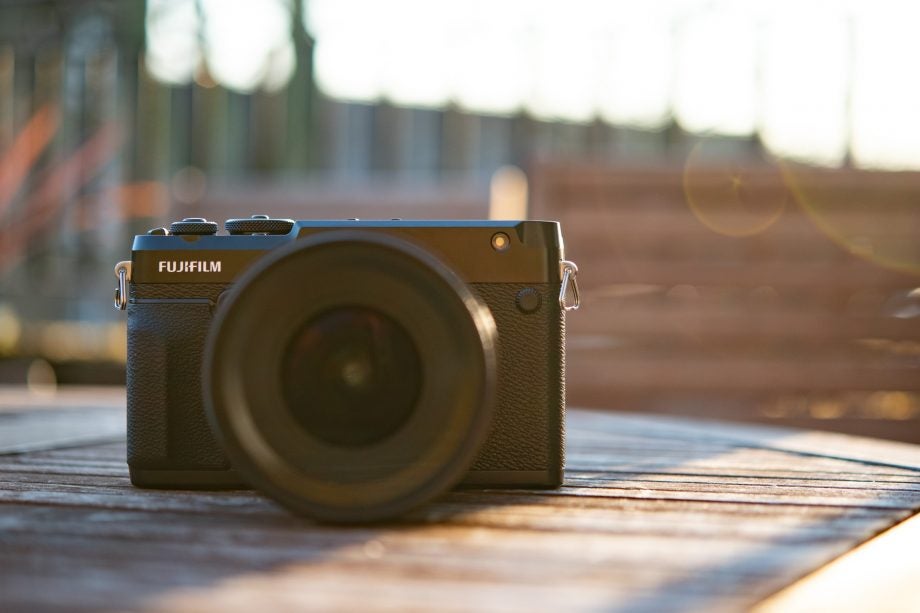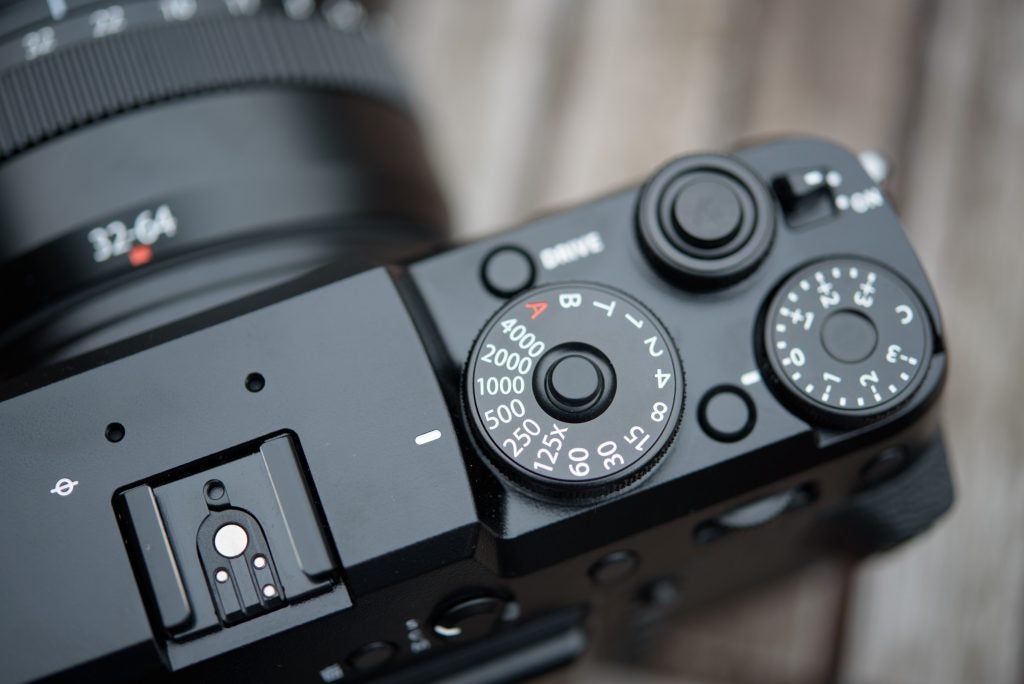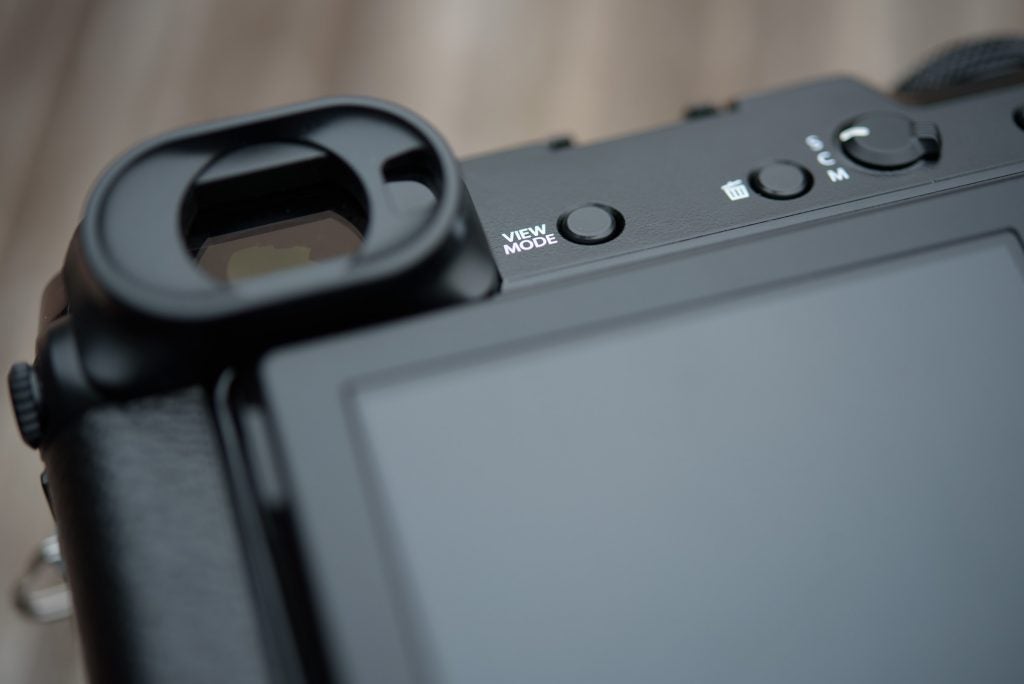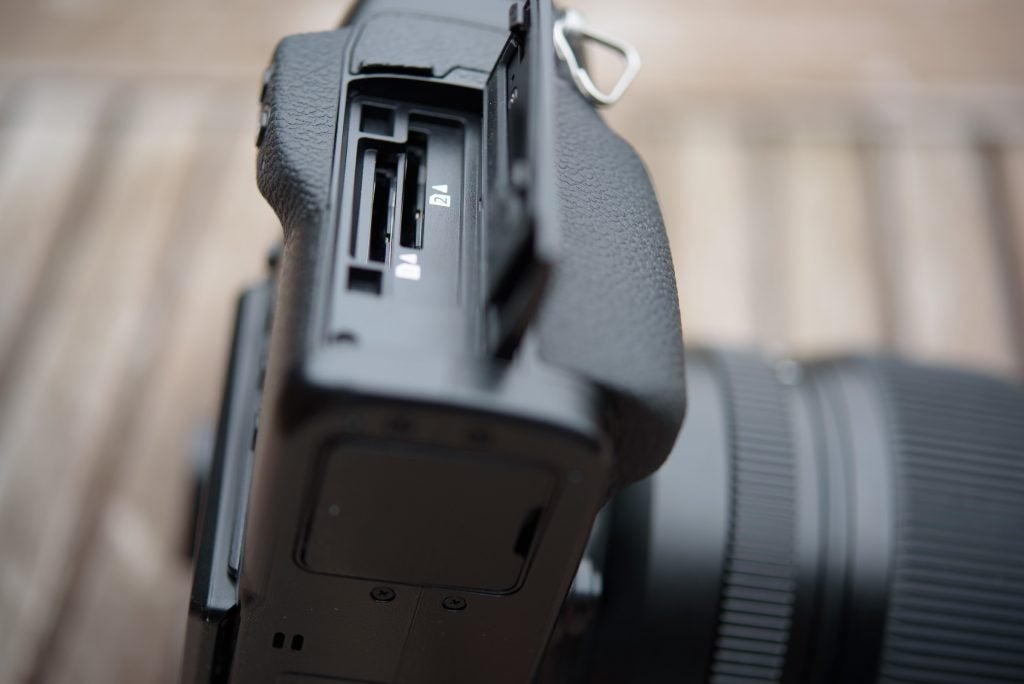Fujifilm GFX 50R Review
Fujifilm GFX 50R Review
Medium-format has never felt so mainstream

Verdict
The GFX 50R won’t be for everyone – even those who can afford it – but if you need to be relatively mobile without compromising on image quality, this deserves to be on your shortlist.
Pros
- Masses of details in images
- Relatively light body
- Robust build
- Great JPEGs straight out of camera
- Two cards slots
Cons
- Not the easiest body to handle
- No 4K video recording
- Small AF lever a little fiddly
- EVF can show aliasing with fine details
- No sensor-based image stabilisation
Key Specifications
- Review Price: £3999
- 51.4-megapixel medium-format sensor
- 3.69m-dot OLED EVF
- 3.2in tilting touchscreen, 2.36m-dot
- ISO 50-102,400 (extended)
- 3fps continuous shooting
What is the Fujifilm GFX 50R?
The GFX 50R is the latest addition to Fujifilm’s GFX family, its range of medium-format cameras for landscape, wildlife, portrait and documentary photographers.
Full-frame cameras might be what most photographers are after these days, but medium-format is still where it’s at if you don’t want to compromise on quality and you have the cash to pay for it.
Medium-format cameras have typically been too bulky, expensive and limited in functionality to get anywhere close to mainstream. However, a number of models released in the past few years have done well to make the format more accessible.
The latest is the GFX 50R, which looks like a supersized version of one of the Fujifilm’s X-series cameras, but with the same kind of price tag as some high-end DSLRs or mirrorless cameras.

Medium-format cameras have much larger sensors than full-frame models, and this means that they use different lenses too. So, while you don’t get the same choice here are you may do with a DSLR, or a reasonably well established mirrorless system, you stand to gain a different level of image quality.
So, with the promise of excellent images and a strong price point, can the GFX 50R trounce its more mainstream rivals?
Related: Best camera
Fujifilm GFX 50R – Design and features
Although the GFX 50R is by no means small, it’s actually remarkably light and portable considering it is housing that enormous sensor.
It weighs in at 755g, with the battery and card loaded. That’s actually lighter than many full-frame DSLRs, although the lenses designed for the bodies are also typically larger than the equivalent lenses for DSLRs.
The GFX 50R is also designed in a flatter, “rangefinder” style. That means the viewfinder sits on the far left of the body, allowing you to use one eye to compose your image, and the other to check out any subjects that might be coming into view.

There’s a small grip around the front of the body to improve handling; this could do with being a little larger, particularly if you’re using a heavier lens. The reality is that most people will be using the GFX 50R with a smaller G-mount lens, but it still isn’t necessarily a camera you want to be carrying around all day in your hand.
There’s a great deal of physical control on hand, including smart milled dials for shutter speed and exposure compensation on the top plate. On such a large body, some of these controls are hard to access comfortably, but attention to detail is great throughout and plenty can be customised.

Speaking of attention to detail, the camera has been protected against both dust and moisture – and if you’re intending to use the camera in less-than-ideal conditions, you’ll be pleased to know that all the current lenses in the system are protected too.
On the inside, the camera partners a 51.4-megapixel sensor with the company’s X-Processor Pro, something that’s also featured inside its X-series models. Other key features include a handful of Film Simulation modes, Wi-Fi and Bluetooth to keep it connected to smart devices, and a contrast-detect AF system that can have up to 425 AF points manually addressed, together with dual slots that accept SDHC and SDXC memory cards.
Video tops out at Full HD rather than 4K, and the 3fps burst mode probably won’t thrill action photographers – but this isn’t a camera that’s particularly suited to either of those things.
Fujifilm GFX 50R – Screen and viewfinder
Electronic viewfinders have massively improved over the past few years, and the 3.69m-dot viewfinder we find on the GFX 50R is specced to a high standard.
This is what we’re starting to find on high-end mirrorless cameras such as the Canon EOS R and Nikon Z7, although some of these have a slightly higher magnification and others now offer more detailed panels.

Still, the one here is big, bright and detailed. It’s particularly nice to use in bright light, but it still manages to display crisp detail when the light levels fall.
The only mark against it is that it tends to show aliasing artefacts quite easily, particularly when shooting something with a lot of fine detail. These dance around sharp edges and detailed parts of the scene, and while they don’t appear in the images themselves, they’re a little distracting as you shoot.
Fujifilm has fitted the GFX 50R with a 3.2-inch LCD screen, one that has a generous 2.36m-dot resolution and touch sensitivity built in. As is pretty much the case with cameras of all levels, you can pull this out from the body and angle so that you can still see what’s going on when you have the camera at waist level or above your head.

As a further bonus, unlike on some other cameras, the eye cup around the viewfinder doesn’t get in the way when you have the screen extended and you’re holding it at waist height.
There’s only a tiny delay between you pressing the screen and the camera registering this, so it’s perfectly usable for setting the autofocus point, adjusting options and so on. It also does well when you’re playing back images, where images can be swiped through, double-tapped and dragged when you want to check your shot is in focus.
As you’d expect with this kind of resolution, details are nice and crisp, and it’s only really when shooting in the sun that it’s harder to see – but that’s true of pretty much all other LCDs.
Fujifilm GFX 50R – Performance
While the GFX 50R may appear big and clunky, it’s blessed with great response overall. There’s virtually no delay once you power up the camera, and moving through the menus with the focus lever is effortless. The clarity and order of the menus have always been a strong point on Fujifim’s cameras, and the one here continues that tradition.
Images are generally written without much delay to the memory card, although it’s worth using a UHS-II card if shooting images consecutively. These are pretty chunky files to be written to a memory card, and while you can only manage around seven or eight “Super Fine Raw + JPEG frames” at the maximum 3fps before any slowdown, they only take around three seconds to write to a UHS-II card, rather than around 14 seconds to a UHS-I alternative.

What’s nice to find is that you can still operate the camera as this happens, unlike on some other cameras where it simply hangs until it’s done.
The camera’s focusing system is based on contrast-detect AF rather than phase-detect AF (or a hybrid between the two), and this generally performs well enough for everyday shooting. The standard across mirrorless and DSLR cameras is now fairly high, and while the GFX 50R doesn’t focus quite as immediately as some other systems, it isn’t slow enough to make any real difference for most subjects. Even in low light it manages to do well, although the continuous focus option is a little too slow to be usable.
Fujifilm GFX 50R – Image quality and video
Thanks to the combination of its sensor, processing power and the small-but-growing collection of GF lenses currently available for the system, images from the GFX 50R are, on the whole, very impressive.
Images viewed at 100% are incredibly detailed, with even far-off intricacies present in more complex scenes, and crisp but natural details of close-up subjects.

Captured at ISO 3200, slight smoothing from noise reduction can be seen in some areas of the scene when you have this enabled in-camera, but plenty of detail remains elsewhere.
The sensor also clearly controls noise very well, which gives you more scope to push the camera when you’re shooting in sub-optimum light. That’s just as well given that there’s no sensor-based image stabilisation, although the equivalent technology is available in three lenses so far.

Taken with the Fujifilm GF 32-64mm F4 R LM WR at f/4 at its minimum focusing distance – out-of-focus areas have a pleasing, natural character.
Even so, images captured up to around ISO 3200 and 6400 retain excellent detail on the whole, with noticeable but slight noise reduction in JPEGs if you have the camera set to its default options. Raw files can be polished up very nicely, and it’s great to see so much highlight detail that appears to be lost in JPEGs recoverable in Raw files.

The highlights have understandably lost a little detail in this high-contrast scene, but processing Raw files shows that most of this can successfully be recovered.
The GFX 50R also benefits from Fujifilm’s film colour science in the shape of Film Simulation modes. These deliver lovely natural hues when shooting on the Standard/Provia mode and pleasingly saturated greens and blues when you switch to the Vivid/Velvia option, although there are many further options such as Astia and Classic Chrome to play with.
Thanks in part to this processing, JPEGs straight out of the camera are excellent. The auto white balance system also appears pretty sound, being reliable enough outdoors and doing well to judge mixed lighting too – not something every camera can manage.

The lack of sensor-based image stabilisation means you need to use OIS lenses to benefit from this stability. Non-stabilised lenses, such as the Fujifilm GF 32-64mm F4 R LM WR at f/4, allows you to use shutter speeds of around 1/50sec or 1/60sec (depending on focal length) without a tripod and still get great sharpness.
If there’s one area of weakness with the camera’s output, it’s with video. 4K video isn’t possible and the Full HD output that the camera is capable of is fine for casual use, but affected by noticeable rolling shutter when panning. On top of that, the fact that you can only use image stabilisation on the lens limits you a little if you’re shooting handheld, and footage shot without it looks a little unsteady.
There’s no phase-detect AF, which means that the camera can’t perform the same kind of smooth focusing transitions as many others, but if you’re using a tripod you can end up with with some perfectly pleasing footage.
Why buy the Fujifilm GFX 50R?
Medium-format cameras have traditionally been more at home in the studio or on an outdoor tripod for landscape duty, but the GFX 50R is portable enough to be used in more casual situations such as street photography.
Obviously the lens you use will make a difference here, too, and not all options developed for the system are small enough to be practical for everyday shooting. But the fact that the system is growing at a good pace and has a relatively affordable option in the GFX 50R, that makes it a really appealing option for those who need lots of detail in their images.
The GFX 50R is certainly a niche camera, thanks both to its handling quirks and high asking price. But its image quality is fantastic and it’s a great option at this price for those who love their medium-format photography.
Fujifilm GFX 50R – The rivals
Hasselblad X1D
The fact that the X1D is double the price of the GFX 50R will immediately rule it out for many, but those with money to spend after something similar may still want to consider it. It offers a 50-megapixel medium-format sensor inside a dust- and weather-resistant body, and has the advantage of a touchscreen and electronic viewfinder.
Not only that, but the fact that it’s lighter and more ergonomically designed than the GFX 50R means that it’s probably a better option if you need to be more mobile.
Canon EOS 5DS R
If you absolutely need 50-megapixel images, you may also want to take a closer look at the Canon EOS 5DS R. It isn’t the newest body, but it’s far cheaper and feels better in the hands than the Fujifilm GFX 50R. It can also be used with a huge assortment of lenses, from wide-angle and macro types through to super-telephoto options and more exotic ones from third parties such as Samyang and Venus Optics.
The rub is that images are captured with a full-frame sensor rather than a medium-format one, and the fact that it offers an optical viewfinder might please purists, but will divide opinion elsewhere.
Verdict
The GFX 50R won’t be for everyone – even those who can afford it – but if you need to be relatively mobile without compromising on image quality, this deserves to be on your shortlist.
Trusted Score
Features
| Camera type | Mirrorless Camera |
| Megapixels (Megapixel) | 51.4 |
| Auto focus | 425 points (117 at default) |
| LCD Monitor | 3.2in vari-angle LCD |
| Viewfinder | 3.69-million dot EVF |
| HDMI | micro, Type D |
Physical Specifications
| Dimensions Width (Millimeter) | 160.7 |
| Depth (Millimeter) | 96.5 |
| Length (Millimeter) | 66.4 |
| Weight (body only) (Kilogram) | 0.775 |

